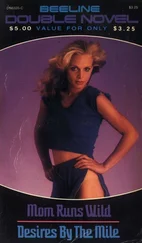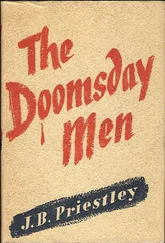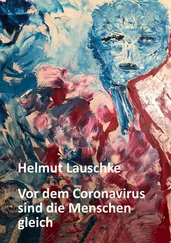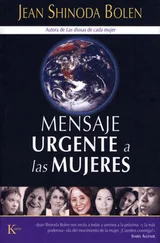The story of the cobalt bomb is an unwritten chapter of the cold war. For Szilard it was a dramatic way of warning people about weapons of mass destruction and the escalating arms race. Scientists had been praised by many for curtailing World War II with the atomic bomb. But in the cold war the creators of these apocalyptic superweapons were seen as holding the fate of the world in their hands. They had transformed the laws of nature into instruments of mass destruction and, as far as the public was concerned, there would soon be little to distinguish real scientists from that fictional master of megadeath, Dr Strangelove.
But scientists have not always been mad, and superweapons not always bad. When you look at the history of superweapons through the lenses of science and popular culture, a very different story emerges. Our feelings towards weapons of mass destruction and their inventors have been characterized by a deep ambivalence. Attitudes have swung like a pendulum from utopian hopes to doomsday fears. At the turn of the last century, scientists were seen as saviours, and it was confidently predicted that science was going to transform the world into what chemist Frederick Soddy memorably called ‘one smiling Garden of Eden’. 2It was the atom that would allow us to enter this mythical paradise. Finding the key that would unlock the energy in the dark heart of matter obsessed both scientists and fiction writers.
The dream of the superweapon also emerged at this time in popular culture, springing up alongside the visions of scientific utopia. For the superweapon was going to achieve what empires and religions had been unable to do since civilization began – to bring peace to the world. A scientific wizard would emerge from his mysterious laboratory bearing a weapon so terrible, so devastating, that no force on earth would be able to stand against it. This scientist would then compel the armies of the world to disarm. Thus the saviour scientist with his superweapon would set the world free from centuries of conflict and found a new scientific Jerusalem. It would be the beginning of a brave new world.
The reality turned out to be somewhat different. The chemist Fritz Haber thought he could save Germany with his superweapon – poison gas. But he was wrong. The suffocating yellow clouds of chlorine billowing across the fields of Ypres in 1915 marked the first use of a scientific weapon of mass destruction. Scientists said that it was a new, humane form of warfare, but ordinary people were appalled. Haber’s wife committed suicide just days after the first use of poison gas. After World War I, Haber was branded a war criminal. But war had evolved, and the doomsday clock could not be turned back. The military on all sides quickly embraced Haber’s new scientific weapon, and soldiers everywhere had to prepare themselves for a new and frightening way to die.
In the 1930s, a Japanese scientist, Shiro Ishii, tried to discover a superweapon that would allow his nation to conquer its enemies. He decided that viruses and bacteria were better weapons than the bullet and the bomb, and pioneered the search for a biological superweapon, committing the most appalling crimes against humanity as he did so. But once again, like some deadly pathogen, warfare had evolved, and in the cold war Ishii’s research was acquired by the American military to help it develop ever more lethal weapons of mass destruction.
Chemistry and biology both did their worst in the twentieth century, as scientists struggled to realize the dream of the superweapon. But it was physics that eventually achieved what the other disciplines could not – a single bomb that could annihilate a whole city in a split second.
For Leo Szilard, it is the ‘tragedy of mankind’ that the story of the atomic bomb began with laudable hopes for a better future. 3At the beginning of the twentieth century, people marvelled at the hidden worlds revealed by X-rays and were awestruck by the mysterious glow of the new miracle element, radium. Such discoveries offered tangible hopes that a new age was dawning.
The scientists who would lead the world into the atomic era emerged from Berlin’s golden age of physics in the 1920s. Among them was Szilard himself, a brilliant yet eccentric Hungarian émigré, known to his friends as the ‘inventor of all things’. 4His vision of an atomic utopia was inspired in part by the fiction of H. G. Wells. The story of Szilard’s mission to save the world takes us through the first, explosive years of the atomic age and into the cold war. It is a story that features three of his fellow countrymen: Eugene Wigner, John von Neumann and Edward Teller. Together they were the ‘Hungarian quartet’, a group of remarkable scientists who all played leading roles in the Manhattan Project to build the atomic bomb and later became key figures in cold-war America. 5All were inspired by the dream of the superweapon.
The lives and attitudes of these extraordinary individuals reveal the true complexity of being a scientist in the most brutal century the world has known. Like his close friend Albert Einstein, Leo Szilard was a humanist who wanted to save the world with science, but his fellow members of the Quartet were less idealistic. In the cold war, angered by the Soviet Union’s treatment of Hungary, they became fiercely anti-Communist. ‘I don’t think any weapon can be too large,’ said mathematician von Neumann. 6Teller, known to the public as ‘Mr H-Bomb’, agreed. 7He became obsessed with the dream of building a bomb thousands of times bigger than the one that destroyed Hiroshima. His deadly vision came true in 1954, when a hydrogen bomb exploded with the force of millions of tons of conventional explosives, vaporizing a Pacific island. Unsurprisingly, both men helped inspire that maddest of mad scientists – Dr Strangelove.
The 1950s became the doomsday decade. It was the era, to quote one writer for the science fiction magazines, of the ‘alphabet bombs’. 8First the A-bomb incinerated two Japanese cities. Then Edward Teller’s H-bomb blasted its way into people’s lives and minds. And finally there was the ultimate weapon that Leo Szilard warned the world about in 1950 – the C-bomb. In the 1960s, the world teetered on the brink of a global nuclear holocaust. In 1962, when America discovered that the Soviet Union was secretly shipping nuclear missiles to Cuba, everyone thought the doomsday clock was about to strike midnight. Like two scorpions in a bottle, the superpowers seemed hell-bent on mutual destruction. It was easy to believe that one of them was already building a doomsday machine, the cobalt superweapon that destroys the world in Stanley Kubrick’s cold-war classic, Dr Strangelove or: How I Learned to Stop Worrying and Love the Bomb . In the story of superweapons, it is often difficult to decide which is stranger – truth or fiction.
In the twentieth century, scientists were raised up to be gods only to be cast down as devils. Films and fiction first turned them into saviours who free the world from war. But as fears grew about superweapons, those saviour scientists became mad scientists. In 1932, physicists attending a conference performed a play in which one of their own was cast as Dr Faust, the alchemist who sold his soul to the Devil for ultimate knowledge. This scientific performance came at a crucial moment in the history of science and the world. Soon Szilard would grasp how to release the energy of the atom, and the race for the atomic bomb would begin. As actors on the world’s stage, scientists would eventually be forced to drop the saviour’s mask. After Hiroshima they would increasingly play the role of the Strangelovean scientist. This was the price of their Faustian bargain.
The history of weapons of mass destruction in the twentieth century is not just about soldiers and scientists. They are not the only doomsday men. Humankind’s most terrible yet ingenious inventions were inspired by a desperate dream, one that was shared by a whole culture. For this reason, history, biography, science and fiction all have an equal part to play in this book.
Читать дальше












